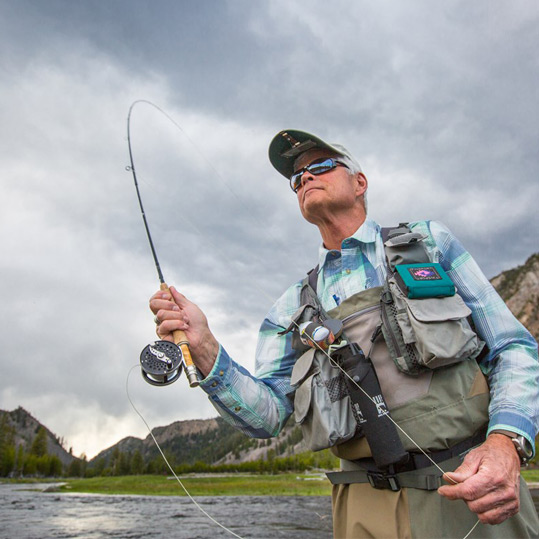You’ve been looking at this date on your calendar for weeks, if not months: the point at which cold temperatures will finally give way to Spring weather, and you’ll be able to head out to the pond for your first bout of fishing. And then, on that blessed morning, it strikes you: You should have set a date to go to the outdoor outfitters for some new supplies.
But is that necessary? Your rod seems to be in good shape, you’ve still got a nice collection of lures and hooks… but what about your line? Is it safe to use after months in storage, or are you at risk of losing your first big catch of the year?
This question, like many, depends on many factors.
The first is what kind of line you put into storage at the end of last season. If you’re a fan of braid, you should be good to go. Braided line, when treated properly, can be used in the water for years.
Monofilament and fluorocarbon do, however, come with what you might call a “shelf life.” Like meat and produce, even if you put it in the refrigerator, these lines will eventually go bad, even if they haven’t been taken out of the packaging.
Granted, “eventually” takes a lot longer than with groceries. There is no official answer for the life of these products, but we’ve compared estimates from various fishing publications and have gathered that monofilament has an average shelf life of two to three years, while fluorocarbon lines can last up to seven or eight years without losing its edge.
These are under ideal conditions, however.
Once you take the line out of its packaging and put it to use, other factors must be taken into consideration. For example, if you have already used the line during the previous year, you should take time to examine it for nicks and imperfections before using it on another run. Even if things looked great at the end of the Fall fishing season, check again. Just like a small crack in a windshield, tiny nicks that were imperceivable before can expand dramatically over time.
Another issue, impacting monofilament in particular, is line memory. After spending several months in one position, lines can begin to stick in one shape. You’ll notice a telltale curl in your line if this is the case.
But what if you bought a new spool last year and never opened it? Consider how it was stored before jumping to conclusions. Sunlight and high temperatures can dramatically weaken these lines, and the most popular places to store fishing gear are often the most problematic. Garages can endure Summer temperatures much higher than air-conditioned homes, while basement storage rooms also tend to host furnaces, making them warmer during the Winter. Keep this in mind when stashing your gear!
Is there a solution for keeping line safe from high temperatures?
One simple idea is to store line away from the rest of your fishing gear in a more temperate part of the home. We may have been onto something when we alluded to refrigerating produce; you can do the same with your fishing line! It sounds like a joke, but refrigeration protects lines from both heat and humidity.
It’s easy to diagnose overexposure to sunlight, at least on monofilament lines. Even on “clear” variations of this line, you’ll be able to spot faded patches where UV rays have sunbleached the line.
Take the time to review your equipment before going fishing for the first time this year, so you won’t spend the rest of the season regretting the one that got away!



